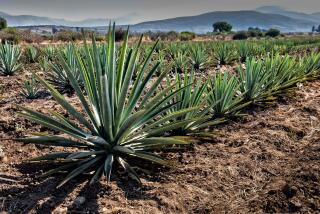Behold New Mexico’s ultimate pork fiesta: 43 pigs, 300 gallons of chile and 22,000 tortillas

It’s 4:30 in the morning, and Anthony Guardian has a problem: His cooking oil is frozen.
He’s getting ready for the 19th edition of the World’s Largest Matanza, an annual fiesta in the small city of Belen, N.M., that celebrates the state’s historic nose-to-tail hog-slaughtering festivals. Sixteen teams from across the state will gather in Eagle Park on this chilly late January day to feed traditional New Mexican matanza dishes — carne adovada, chicharrones, carnitas, red chile and more — to an estimated 9,500 attendees who’ll pay $15 for all they can eat.
Guardian and his squad, the Rio Grande Matanzeros, are the reigning People’s Choice winners — and are aiming for Grand Champions this year. But right now, in windy 20-degree weather and with only generator-powered floodlights for illumination, the 43-year-old is scrambling.
The Matanzeros are busy chopping mesquite wood or laying out knives and ingredients to tackle the 12-hour day ahead of them. So he jukes around the pit fires, propane gas tanks, cauldrons, smokers and skillets behind the team tent and searches for a solution.
“A lamp — I need a heating lamp!” Guardian shouts. Someone finds two and places them around the jugs of cooking oil.
“We gotta get the advantage,” he says in a gravelly voice. He’s dressed in two jackets, overalls, a cowboy hat topped by a rattlesnake, and python-skin boots, a dagger around his neck. “We’re always the first team putting out food, and the last.”
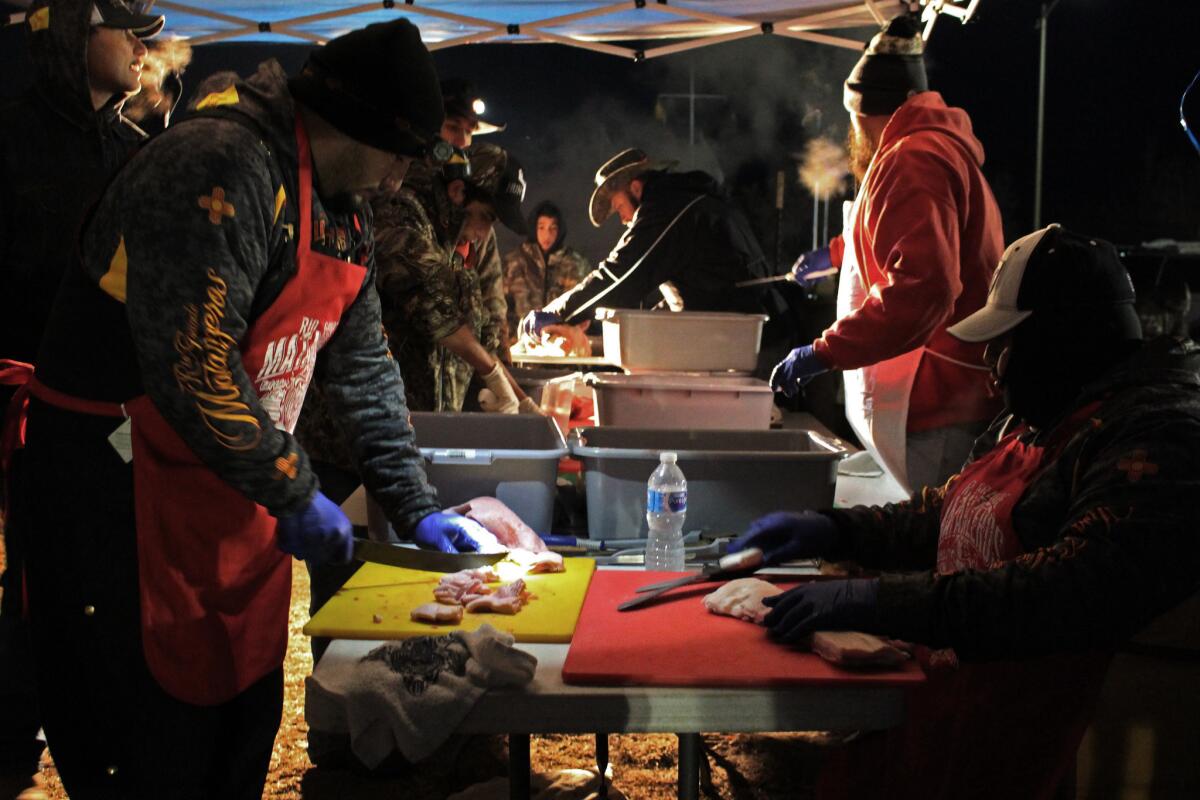
He looks around. No other team has yet arrived. “By the time they start cooking,” he cracks, “it’ll be noon!”
Towns in the Land of Enchantment have held matanzas for centuries, ever since Spanish settlers brought the tradition from Europe. These all-day affairs see men and women break down pigs and use every part, from the blood to the bung. In the United States, only Cajun boucheries can compare in terms of a communal feast to revere the animal — and to express gratitude by pigging out.
“This is what our people live and breathe,” says Kevin Otero, program director for KANW-FM 89.1, an Albuquerque NPR station that specializes in New Mexican cultural programming. “Families would have matanzas every weekend. It’s not like that anymore.”
As agricultural traditions fade across the country, the decline particularly stings in New Mexico, a state where many residents proudly trace their lineage back to the conquistadors and grumble at Americans who view the state only as a land of turquoise and “Breaking Bad.”

“It’s heritage, it’s community, it’s ritual, it’s economics, it’s culinary, it’s celebration,” says Tey Marianna Nunn, visual arts program director at the National Hispanic Cultural Center in Albuquerque. “It really is a performance art form.”
Knowing its drawing power, the Hispano Chamber of Valencia County started what evolved into the World’s Largest Matanza in 2000 as a fundraiser for high school students.
“We can have a banquet,” says current board secretary Rita Garcia, “but isn’t a matanza more fun?”
New Mexican music legends such as Al Hurricane made regular appearances to play the state’s unique sound, a horn-heavy genre in which the band can go from “Brown-Eyed Girl” to a Los Tigres del Norte classic and not miss a beat, mess up an accent or lose the dance floor.
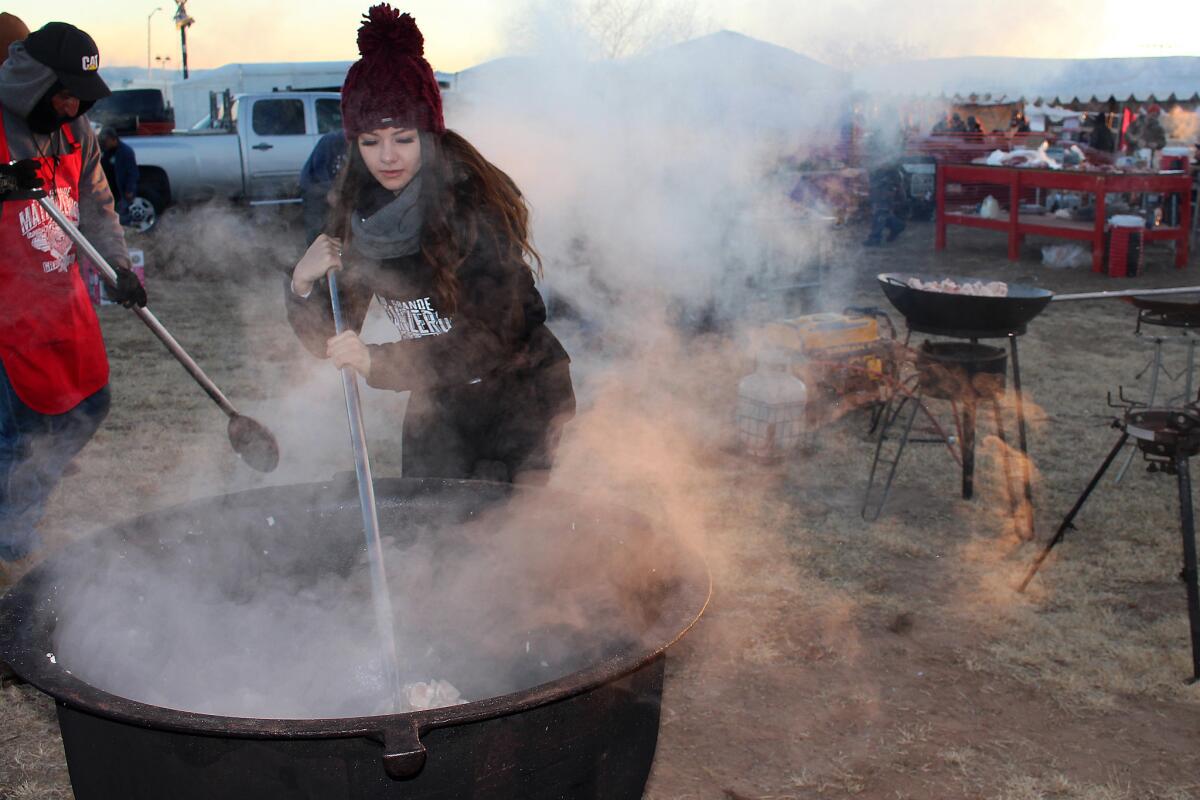
The sun is beginning to rise, just in time for the first snack of the day: pork sausage stuffed with cheese and sour cream, enveloped in red chile hash browns.
Meanwhile, Guardian works on his liver dish, mincing pre-marinated lumps alongside bell peppers, purple onions and shredded carrots. He puts everything into egg roll paper and fries the results.
Next up are lonjas, fatback that will be fried into chicharrones.
Guardian has a torn rotator cuff, so helping him stir the chicharrones is his 20-year-old daughter, Alexis. She has accompanied him to matanzas most of her life, so she knows the procedure: Wait for the raw pork to cook to the point that it jiggles, then flip it with a massive paddle from the edge of the cauldron to the bottom. Repeat.
“It’s fun,” she says. “I might be the last generation that cares. But hopefully not.”
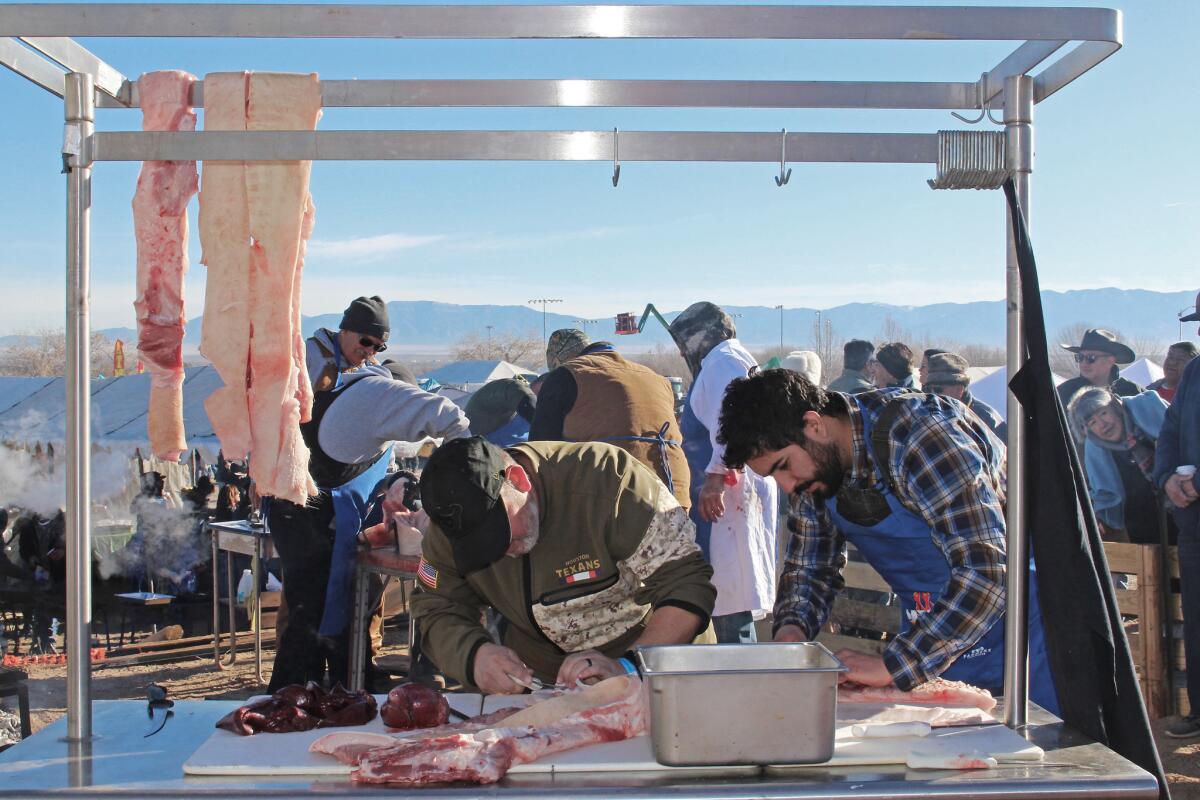
Crowds flock into Eagle Park once the gates open at 7 a.m. Mesquite smoke spreads across the park, along with the smell of fried, smoked and cooked pork. Benjamin Valencia, who was previously tasked to observe his father and uncle lead the butchering, has a new job: He’s wearing a pig mask and welcomes people to the Matanzero booth.
Lines form so people can gorge on breakfast: spicy red chile pancakes, red chile flecked with pork, and breakfast burritos, among other items.
All the teams are now chopping and cooking — save for one. In an embankment that overlooks the field where the World’s Largest Matanza is happening, brothers Bruce and Steve Gallegos wait for a 55-gallon oil drum filled with water to boil. They’re the last team allowed to fully butcher a pig at the event, an honor that Steve cracks went to them “because doing it the old way is hard — and we’re old.”
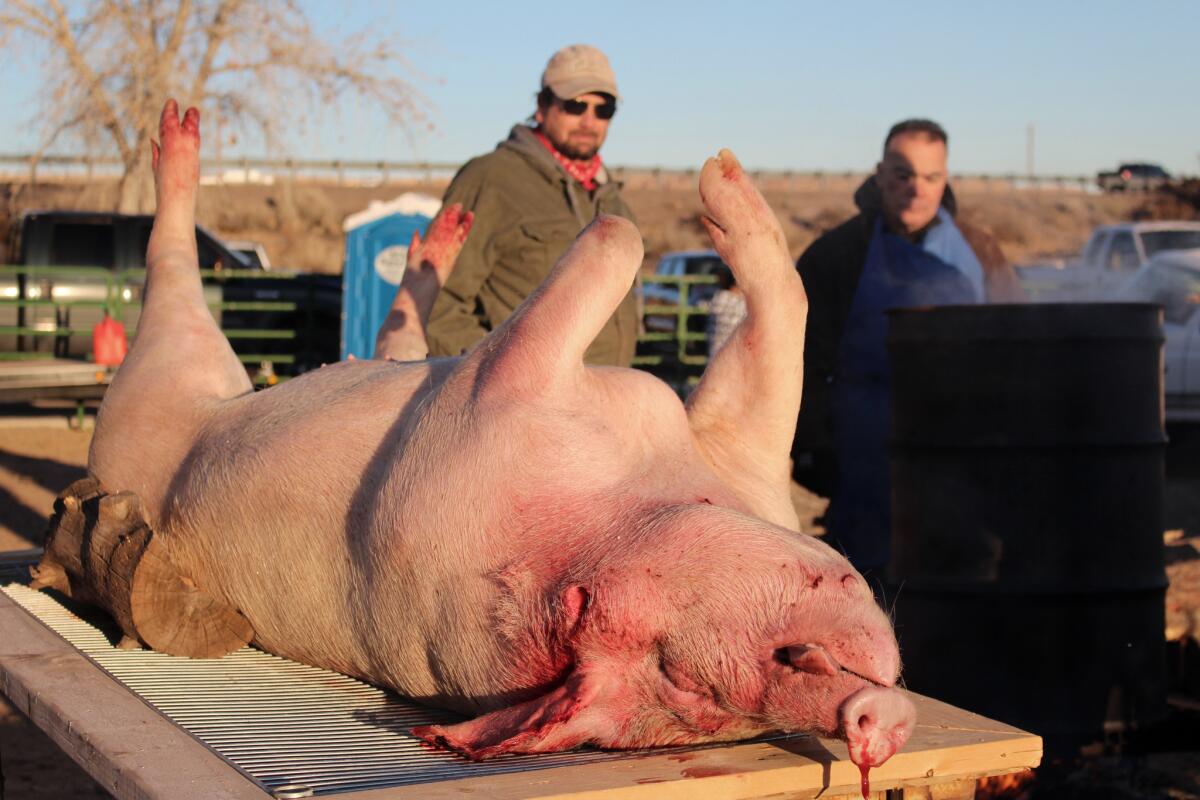
Before them is a 275-pound sow on a table, its hooves up in the air, its tongue sticking out. Congealed blood hangs from its snout; a hole on the side of its neck is where the pig was stabbed earlier that morning. (Although matanzas historically involved killing the animal on site, teams competing in the World’s Largest Matanza use pigs already slaughtered.)
Teams at the World’s Largest Matanza broke down full pigs until 2012, when USDA officials required them to work with pre-prepped pigs from a facility approved by the government agency because the Matanza served food to the public for a fee — and the feds argued that meant the event was now under their jurisdiction.
“It’s great now, but it was a better event back then,” one Chamber member said.
A crowd gathers around the Gallegos booth, staring at the prone pig. “Oh wow, that’s creepy!” a young boy says.
Older people immediately begin to share stories about past matanzas, along with hog-killing tips: whether you stun the pig with the blunt edge of the axe, or the blade. Whether you kill it with a bullet two inches above the eye, or behind the head. Whether you bleed it out with a stab to the heart, or to the jugular.
Ronnie Bonney drove nearly four hours from Clovis so his wife could see her first matanza.

“She’s not matanza,” he roars. “She’s Albertsons!”
A group of five men assist Steve Gallegos by grabbing gunny sacks and spreading them over the pig. Someone pours scalding water over it. After a short wait, the men begin to shave off the bristles.
Gallegos cuts off the feet, then puts them on a grill. After the pig is shaved to his liking, he makes a deep slit into its chest and cracks it open.
The crowd whips out smartphones. Gallegos first pulls out the liver and heart and hands them off to his butchers. He then cuts around the intestines, taking care to not nick the bloated, purple sacs lest their contents spill out and spoil everything.

The World’s Largest Matanza unfolds without any hitches, with attendees including military veterans, motorcycle club members and DEA agents. The temperature never exceeds 50 degrees, but no one seems to mind. The bands blast through their sets, with an announcer urging attendees to “dance off those chicharrones.”
By early afternoon, only a couple hundred people remain, mostly teams and their friends and family waiting to hear the winners in 10 categories such as carnitas, bizcochitos (an anise-flavored sugar cookie) and the Iron Pig, in which teams were tasked with cooking pork alongside a surprise ingredient: polenta. (“Maybe it’s not an exotic ingredient in Southern California,” says the head of judging. “But it is around here.”)
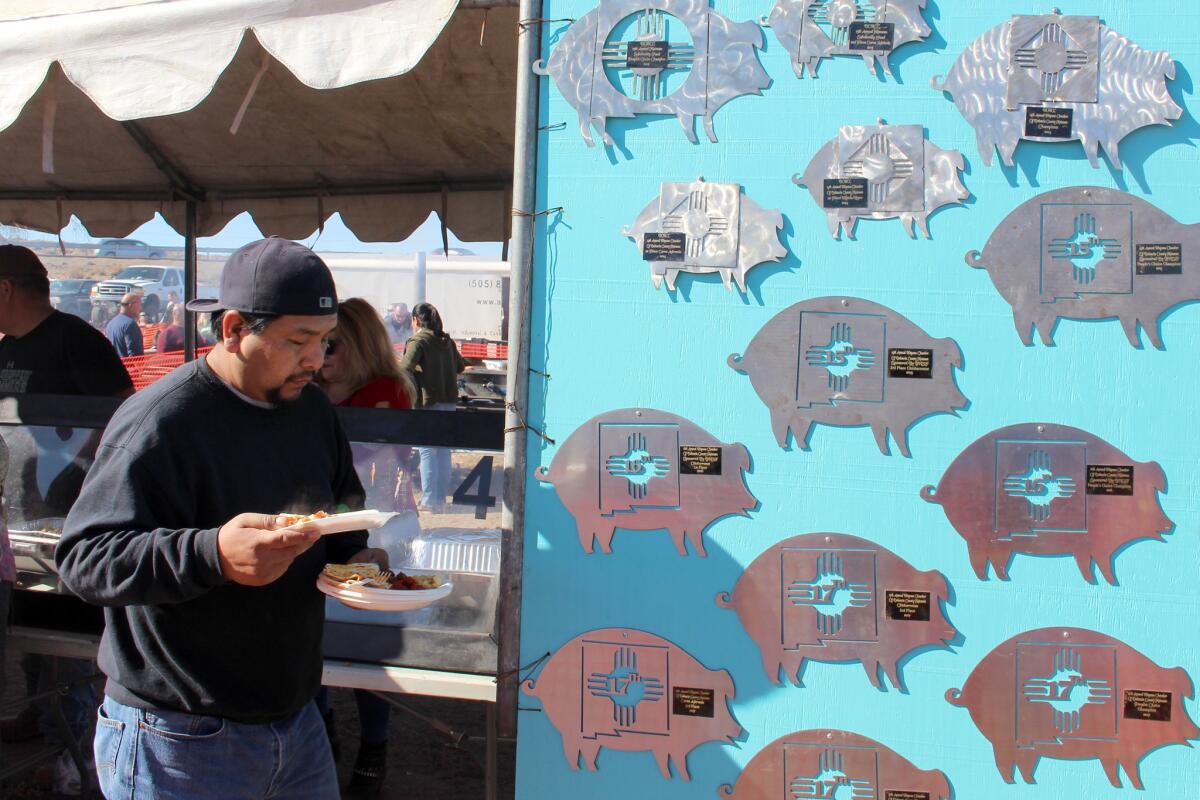
Before the winners are announced, a Hispano Chamber member reveals the most important stats for the day: 43 pigs cooked, 300 gallons of chile used, 22,000 tortillas handed out and tens of thousands of dollars in scholarships raised.
The Rio Grande Matanzeros dominate. Guardian wins first place for his liver and Iron Pig entrees; his mother’s red chile recipe earns third. Two other team members get first and third in the tortilla category, and the Matanzeros win the People’s Choice once more.
But the Grand Champion title eludes the 20-person team yet again: The winner is one of the main sponsors of the Matanza.

“I don’t know what more we can do,” Guardian says. He takes off his sunglasses to wipe away tears. “I can’t ask anything more of our team. We just gotta keep going.”
The other Matanzeros, though, are ecstatic. They gather for a team photo as Guardian gathers his composure. He puts on his sunglasses again and smiles.
“As long as I’m able to,” he says, “I’ll be doing matanzas until God calls me home.”
Twitter: @GustavoArellano
More to Read
Eat your way across L.A.
Get our weekly Tasting Notes newsletter for reviews, news and more.
You may occasionally receive promotional content from the Los Angeles Times.
